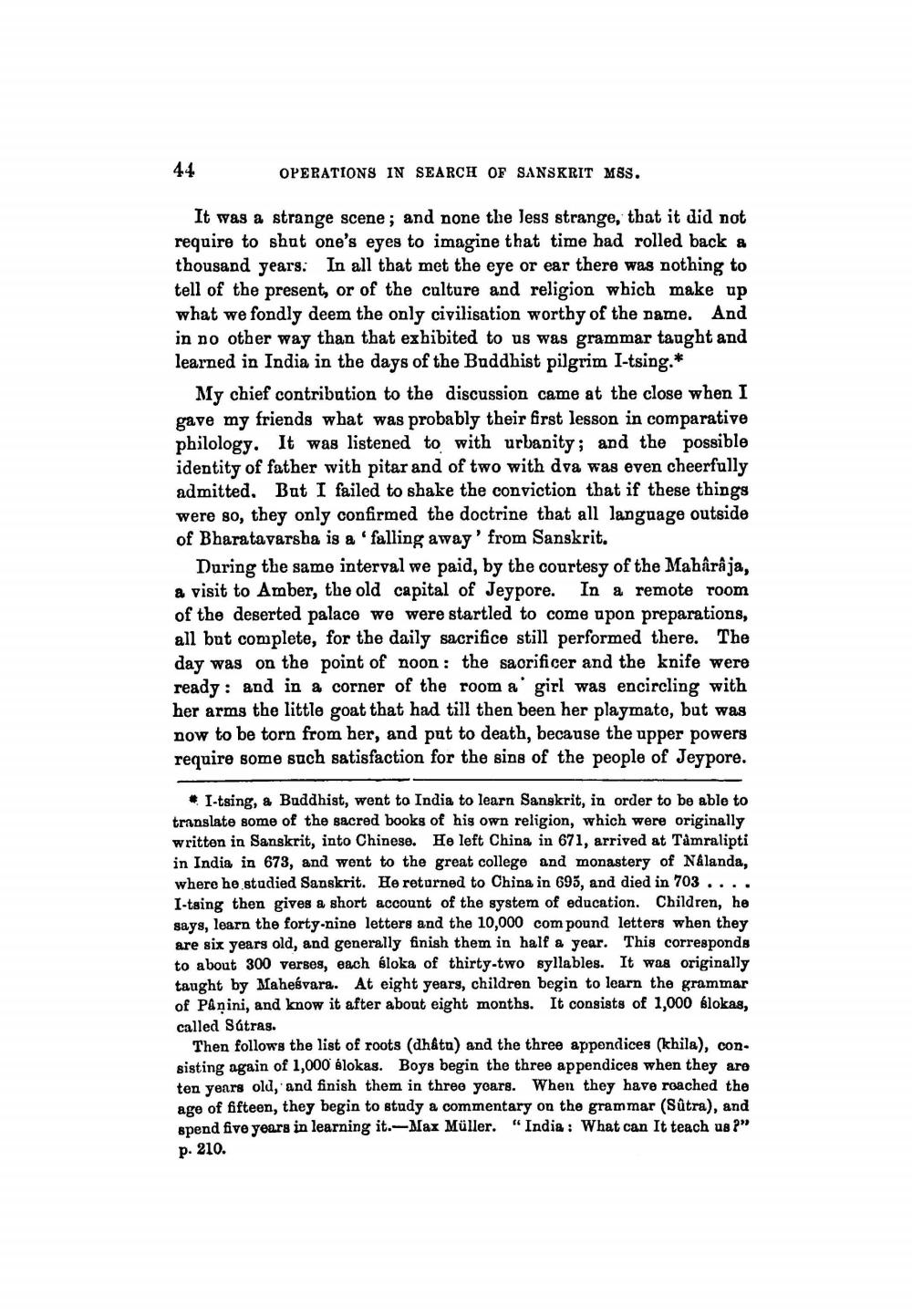________________
44
OPERATIONS IN SEARCH OF SANSKRIT MSS.
It was a strange scene; and none the less strange, that it did not require to shut one's eyes to imagine that time had rolled back a thousand years. In all that met the eye or ear there was nothing to tell of the present, or of the culture and religion which make up what we fondly deem the only civilisation worthy of the name. And in no other way than that exhibited to us was grammar taught and learned in India in the days of the Buddhist pilgrim I-tsing.*
My chief contribution to the discussion came at the close when I gave my friends what was probably their first lesson in comparative philology. It was listened to with urbanity; and the possible identity of father with pitar and of two with dva was even cheerfully admitted. But I failed to shake the conviction that if these things were so, they only confirmed the doctrine that all language outside of Bharatavarsha is a 'falling away' from Sanskrit.
During the same interval we paid, by the courtesy of the Mahârâja, a visit to Amber, the old capital of Jeypore. In a remote room of the deserted palace we were startled to come upon preparations, all but complete, for the daily sacrifice still performed there. The day was on the point of noon: the sacrificer and the knife were ready and in a corner of the room a girl was encircling with her arms the little goat that had till then been her playmate, but was now to be torn from her, and put to death, because the upper powers require some such satisfaction for the sins of the people of Jeypore.
I-tsing, a Buddhist, went to India to learn Sanskrit, in order to be able to translate some of the sacred books of his own religion, which were originally written in Sanskrit, into Chinese. He left China in 671, arrived at Tâmralipti in India in 673, and went to the great college and monastery of Nalanda, where he studied Sanskrit. He returned to China in 695, and died in 703 I-tsing then gives a short account of the system of education. Children, he says, learn the forty-nine letters and the 10,000 compound letters when they are six years old, and generally finish them in half a year. This corresponds to about 300 verses, each éloka of thirty-two syllables. It was originally taught by Maheśvara. At eight years, children begin to learn the grammar of Panini, and know it after about eight months. It consists of 1,000 slokas, called Sútras.
Then follows the list of roots (dhâtu) and the three appendices (khila), consisting again of 1,000 slokas. Boys begin the three appendices when they are ten years old, and finish them in three years. When they have reached the age of fifteen, they begin to study a commentary on the grammar (Sûtra), and spend five years in learning it.-Max Müller. "India: What can It teach us?" p. 210.




